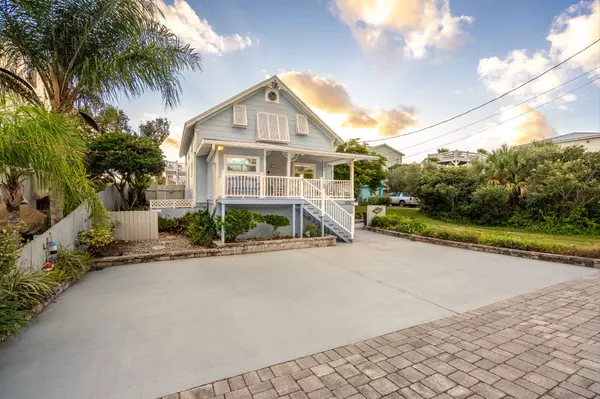Cost of Living in St. Augustine, FL: What to Expect
St. Augustine, Florida, is a city where history meets beachside beauty, creating a lifestyle that appeals to locals and newcomers. However, understanding the cost of living here is essential for planning a move. This article covers key expenses—such as housing, utilities, groceries, healthcare, and entertainment—so you can create a realistic budget before calling this charming city home. While costs vary widely depending on the area and broader economic factors, this guide provides estimates and considerations for those looking to settle in the Nation’s Oldest City.
Housing Costs: Prices & Options for All Lifestyles
Housing costs in St. Augustine can vary greatly depending on location, home type, and market trends. Popular areas, like Anastasia Island and Vilano Beach, tend to have higher property prices due to beach access and demand. Generally, home prices in St. Augustine range around the $400,000 to $500,000 mark for a mid-sized home, though they can be higher in certain neighborhoods. Rentals are similarly diverse, with monthly prices typically spanning from $1,500 to $2,500, depending on factors such as size, amenities, and location.
Flood risks may affect your overall housing expenses because coastal properties may have higher insurance costs. Consider these additional costs when planning your budget. Due to the fluctuating nature of the housing market, it's wise to check current listings and work with a local agent to find options that best suit your budget.
Utility Expenses: Climate & Coastal Considerations
The coastal climate in St. Augustine leads to utility expenses that often fluctuate with the seasons. Warm, humid summers generally require more air conditioning, which can increase electricity bills. Monthly utility costs, including electricity, water, and waste, tend to average around $150 to $200 for a standard home, though actual costs may vary based on energy efficiency and home size.
While Florida’s electricity rates are near the national average, additional cooling needs can increase costs during peak summer months. Many residents choose energy-efficient upgrades to help offset these seasonal spikes.
To manage utility costs, consider investing in energy-efficient appliances and keeping the thermostat in a moderate setting, especially during warmer months.
Groceries & Dining: Local Prices & Options
Grocery costs in St. Augustine typically fall slightly above the national average, with a family of four spending roughly $700 to $800 monthly. Local grocery stores like Publix and Walmart serve as convenient options. At the same time, St. Augustine also offers farmers' markets with fresh produce and seafood, which can be more affordable than grocery chains, making it an excellent option for budget-conscious residents.
Dining out in St. Augustine ranges from casual beachside eateries to upscale dining. A mid-range meal for two generally costs about $40 to $60, though costs vary widely depending on the type of restaurant and location.
Transportation & Gas Prices: Getting Around the Ancient City
St. Augustine is a car-dependent city, as public transportation options are limited. While the Sunshine Bus Company provides some local routes, most residents prefer driving, especially for commuting. Gas prices in Florida average around $3.00 to $3.50 per gallon, though these can fluctuate with economic conditions.
Since St. Augustine is a smaller city, commuting times are typically short, which helps keep fuel costs manageable. Parking fees can be a consideration in busier areas, such as downtown, but many suburban areas offer ample free parking.
If you’re planning frequent trips or a long commute, consider carpooling or utilizing the Sunshine Bus service where available to reduce monthly transportation expenses.
Healthcare & Insurance: Essential Costs to Keep in Mind
Healthcare costs in St. Augustine, as in much of Florida, are slightly above the national average. Monthly health insurance premiums often range from $400 to $500 for individuals, and additional insurance coverage may be required for those living near the coast due to hurricane and flood risks.
It’s also advisable for prospective homeowners to factor in home insurance costs, especially flood insurance, which can vary significantly based on proximity to the coast. Working with an insurance agent can help you identify the most cost-effective policies based on your property’s location and coverage needs.
Education & Childcare: Investing in the Future
Families with children in St. Augustine benefit from top-ranked public schools, with the St. Johns County School District consistently rated #1 in Florida. This exceptional education system provides families a high-quality, cost-effective alternative to private schooling, attracting many families from nearby counties like Duval. Daycare and childcare services typically range from $900 to $1,200 per month, depending on the provider and child’s age.
Additional expenses for extracurricular activities and summer camps may also impact your budget, but these programs are plentiful and offer families valuable opportunities for children’s enrichment and development. Families in St. Augustine can feel confident in the quality and affordability of public education, which supports a well-rounded academic experience for students.
Entertainment & Leisure: Embracing the Local Lifestyle
St. Augustine offers various entertainment and leisure activities, many of which are free or low-cost. With miles of beaches, historic sites, and annual festivals, residents can enjoy much of what St. Augustine offers without a hefty price tag.
A typical night out—including dinner and a local show—may cost around $100, while free events, like beach outings and visits to state parks, allow for budget-friendly enjoyment. For frequent visitors to popular sites, annual passes can offer cost savings over single-entry tickets.
Taxes in St. Augustine: What to Know as a Homeowner
One major advantage of living in Florida is the absence of state income tax, which can ease the financial burden on residents. Property taxes in St. Johns County, where St. Augustine is located, are around 0.9%, though actual rates vary by property and location. For example, owners of properties located within the municipal limits of the City of St. Augustine (mostly the downtown area) pay much higher property taxes than elsewhere in St. Augustine. Regardless of location in St. Augustine, homeowners can still benefit from Florida’s homestead exemption, which can significantly reduce annual property taxes for primary residences.
Homeowners considering a move to St. Augustine may find that Florida’s favorable tax policies help offset some of the costs associated with living in a coastal city.
Conclusion
Understanding the main costs associated with living here can help new residents budget wisely and make the most of this vibrant city. While actual expenses vary based on location, market trends, and personal lifestyle, St. Augustine remains a city where careful planning can provide an exceptional quality of life.
St. Augustine has much to offer, whether you’re drawn by the beaches, history, or simply the welcoming community. Create a budget that suits your needs, explore the area’s many affordable attractions, and enjoy everything this timeless city has in store.
Interested in learning more about housing options and planning for life in St. Augustine? Contact me for expert guidance tailored to your needs.
Categories
Recent Posts











